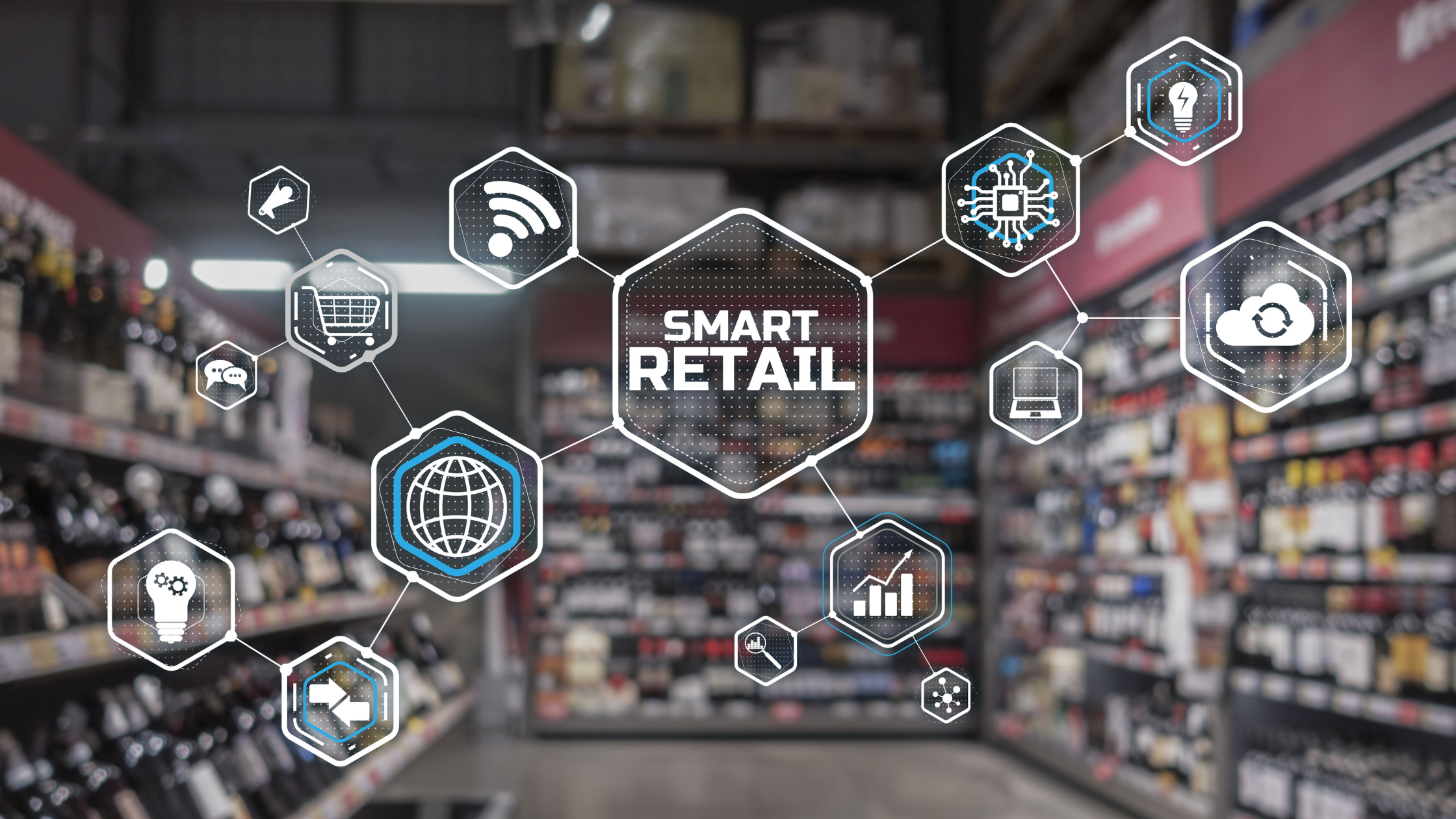Retail Store Management
Despite their share of difficulties, brick-and-mortar retail stores are returning, thanks in large part to the in-store experience. According to Statista, 83.6% of all retail purchases in the US take place in physical locations, and this percentage is predicted to rise! Retail store managers must realize that successful retail store management is more important than flashy displays.
It combines short-term projects like managing inventory, and organizing marketing campaigns and long-term ones like exceptional customer service, customer relationship management, personnel scheduling, striving for customer loyalty and so much more!
So, What is Retail Store Management?
Retail store management is the art of curating a thriving retail environment. It encompasses a range of strategic activities, from cultivating a knowledgeable staff to crafting compelling product presentations.
At its core, it’s about fostering a seamless customer journey that translates to consistent revenue generation. When done correctly, it is nearly imperceptible—a smooth symphony that keeps the store running. If you do things incorrectly, though, clients may notice bare shelves, backed-up lines, or a chaotic environment. What then can you do to master this?
How do you manage a retail store effectively?
Product and Inventory Management
Product and Inventory Management is the lifeblood of any retail store lies in its ability to offer the right products at the right time. This involves:
- Planning and Procurement: Consider customer wants and market trends while choosing products.
- Inventory Optimization: Reduce slow-moving inventory that takes up expensive space while maintaining ideal stock levels to prevent stockouts.
- Inventory Management Tools: To ensure effective inventory control, use technology to track sales goals, monitor stock levels, order new products, and schedule markdowns.
- Effective Inventory Management Leads To:
- Reduced Inventory Holding Costs Reduction in inventory holding costs results from not holding onto extra inventory, which improves cash flow.
- Better Order Fulfillment: It’s also important to provide clients with what they need when they need it.
Visual Merchandising
Create a warm and inviting environment that invites people to explore and learn about your items. This calls for efficient use of space, color palettes, and lighting:
- Storytelling through Displays: Consider using your displays to communicate the narrative of your brand. Emphasize the qualities of the products and make the purchasing experience unforgettable.
- Balanced and Organized Displays: To make shopping easier, make sure your displays are both aesthetically pleasing and well-organized.
Operations and Process Management
Workflows and operational procedures must be well specified for a retail store to operate efficiently. Efficient operations depend on your team receiving proper training on these procedures, such as:
- Product knowledge
- Store merchandising abilities
- Inventory handling
- Store maintenance
- Point-of-sale (POS) system usage
- Customer service
- Cash handling
- Operating procedures
Leveraging Technology for Streamlined Operations:
Tools like “KNOW” can significantly enhance workforce management by:
- Digitalizing Staff Tasks: Manage checklists, daily sales reporting, and sending timely reminders are just a few ways that tools like “KNOW” may dramatically improve workforce management.
- Shift Planning: To facilitate last-minute changes, prepare and distribute rosters to staff phones for multi-store operations.
- Employee Training Software: Provide your team with up-to-date, interactive training materials to ensure they are knowledgeable about the newest developments (LMS).
Creating a Capable Team:
Recruiting competent people and inspiring them to provide outstanding customer service and retail business management are the keys to success, even in the absence of training.
- Make the Right Connections: Seek out candidates whose aptitudes and disposition mesh well with the culture of your organization.
- Performance Management & Coaching: To assist your team succeed, give regular coaching and feedback.

- Data-driven decision-making: Gather and examine store data on transactions, sales, foot traffic, and attendance to make well-informed choices on customer experience enhancements and sales tactics.
- Invest in Training: Through thorough training programs, provide managers and employees with the information and abilities they need to succeed.
- Set SMART Goals: Based on market potential and marketing strategies, set clear, quantifiable, realistic, relevant, and time-bound goals for your store.
- Embrace Relevant Technologies: Stay updated on the most recent developments in retail technology to improve customer satisfaction and operational efficiency.
- Regular Store Audits: Regular audits are a good way to make sure that important guidelines are being followed, such as inventory management, product knowledge, and safety and emergency protocols.
Tips for Running a Retail Store Smoothly
Beyond established processes, here are some additional tips for efficient day-to-day operations:
- Daily Team Meetings: To keep everyone in sync and on schedule, hold regular team meetings to discuss tasks, resolve obstacles, and reiterate procedures and expectations.
- Make Daily Housekeeping a Priority: A spotless store at closing time makes for a seamless reopening the following day. Make checklists with designated tasks to keep the retail environment pristine.
- Safe Closing Methods: Set aside time to count the cash, lock-up safes and cash drawers, turn off the point-of-sale system, and store credit card readers and cash registers securely.
- Closing Walkthrough: Make sure all computers, electrical displays, music systems, lights, and televisions are off before locking everything up.
KNOW: The Future of Retail Store Management
Juggling inventory, staffing, and a million other tasks? The KNOW app can be helpful! KNOW app offers a suite of tools designed to streamline retail store management, aligning with industry best practices. It tackles your everyday challenges, keeping your store running smoothly and your customers happy.
Here’s How KNOW Can Be A Hero For Retail Business:
Operations and Process Management In the Retail Industry
Simplify your daily grind! Streamline tasks, manage workflows, and standardize procedures with KNOW. This means less chaos and more time for what matters – like chatting with customers and making sales!

Staff Training and Performance Management For Customer Satisfaction
Build a dream team! KNOW can help you train your staff, monitor their performance, and provide feedback. A happy, well-trained team is the backbone of customer satisfaction and successful retail store management. Also, with KNOW’s shift planning tool meant for multiple stores’ shift management can plot and publish rosters to employees’ phones and also allows for last-minute changes easily.
Data-Driven Insights For Retail Store Management
Make data-driven decisions! KNOW provides insights into sales trends, customer behavior, and other key metrics. This data will help you make informed choices about your inventory, marketing, and overall strategy.
So, what are you waiting for? Experience the KNOW App yourself and see how it can transform your retail store. Remember, a little help from KNOW can go a long way in making your life easier and your store a success.
Frequently asked questions:
1. What are the 5 key areas of retail operations?
The five key areas of retail operations are:
- Inventory management
- Store design and layout
- Customer service
- Marketing and promotions
- Financial management
2. What is a store layout?
A store layout refers to the arrangement and placement of products, fixtures, and aisles within a retail space. It aims to create an efficient and appealing flow for customers to navigate the store.
3. What is store planning?
Store planning involves strategically designing and organizing a retail space to optimize sales and customer experience. It encompasses elements like store layout, product placement, lighting, and overall ambiance.
4. What is a store format?
A store format refers to the type of retail store and its specific characteristics, such as size, product assortment, pricing strategy, and target market. Examples include supermarkets, department stores, specialty stores, and discount stores.
5. How do you classify a retail store?
Retail stores can be classified based on various factors, such as:
- Merchandise offered (e.g., apparel, electronics, furniture)
- Target market (e.g., luxury, mid-range, discount)
- Store size (e.g., small, medium, large)
- Ownership structure (e.g., independent, chain, franchise)
6. What is the main function of store keeping?
The main function of store keeping is to ensure the efficient management and control of inventory within a retail store. This includes receiving, storing, and issuing merchandise, as well as maintaining accurate records and preventing losses.
7. How does store planning impact customer behavior
Store planning, which involves strategically designing and organizing a retail space to optimize sales and customer experience, can significantly impact customer behavior. Here are some ways in which store planning can influence customer behavior:
- Navigation and Flow: A well-designed store layout can guide customers through the space, making it easier for them to find products and reducing frustration. This can lead to increased customer satisfaction and loyalty.
- Product Placement: Strategically placing high-demand and impulse items can increase sales. For example, placing candy or snacks near the checkout line can encourage customers to make additional purchases.
- Visual Appeal: A visually appealing store can create a positive atmosphere, making customers more likely to spend time browsing and potentially increasing sales. This can be achieved through effective use of lighting, color schemes, and displays.
- Customer Engagement: Store planning can encourage customer engagement by creating interactive displays, offering samples, or hosting events. This can help build brand loyalty and encourage repeat business.
- Efficiency: A well-planned store can reduce wait times and improve checkout efficiency, leading to a better overall shopping experience. This can be achieved through optimized checkout locations and efficient product placement.
- Customer Insights: Store planning can provide insights into customer behavior, such as which products are most popular and where customers spend most of their time. This information can be used to refine the store design and improve the shopping experience.







![The 10 Best Restaurant Scheduling Software and Apps [2025] restaurant scheduling software](https://www.getknowapp.com/blog/wp-content/uploads/2024/09/restaurant-scheduling-software-360x240.png)






